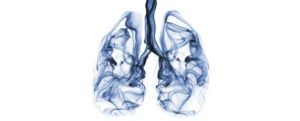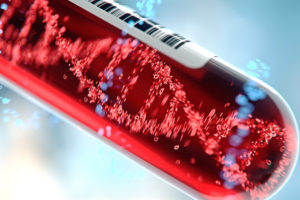Neutrophilic Asthma Plasma, Serum Samples
Bay Biosciences provides high-quality, fresh frozen biopsy tissue samples. FFPE tissue blocks with matched fresh, frozen sera (serum), plasma, peripheral blood mononuclear cells (PBMC) bio-fluids from patients diagnosed with neutrophilic asthma.
The sera (serum), plasma and PBMC biofluid specimens are processed from neutrophilic asthma patient’s peripheral whole-blood using customized collection and processing protocols.

Neutrophilic Asthma Overview
Neutrophilic asthma is a type of asthma in which there is a high neutrophil count in your sputum (mixture of saliva and mucus from your respiratory tract). Neutrophils are white blood cells that help fight off infections and play a role in healing injured tissues.
This is the most common type of severe asthma in adults and usually starts after age 12, affecting approximately 1 in 5 adults with asthma. These patients tend to be older, are found to have disease-causing bacteria in their respiratory tract, and do not respond well to traditional therapies.
Asthma is a chronic inflammatory airway disease with several distinct phenotypes, characterized by different immunopathological pathways, clinical presentation, severity of the disease and response to treatment.
The subtypes (phenotypes) of asthma include eosinophilic, neutrophilic, mixed granulocytic and paucigranulocytic asthma.
Neutrophilic asthma is a severe and persistent disease, with frequent exacerbations and hospitalizations. It is characterized by the presence of high levels of neutrophils in the lungs and airways and fixed airflow obstruction.
Of the more than 25 million people in the U.S. living with asthma, only about 5-10% patients suffer from severe asthma.
Approximately 3.6-10% of patients with asthma have severe refractory disease, which is uncontrolled on high doses of inhaled corticosteroids and long-acting β2-agonists.
Some of the patients with severe asthma suffer from neutrophilic phenotype.
Neutrophils are abundant in the circulation. These cells are recruited into the airways in a number of circumstances, eg, following exposure to pollutants and pathogens or in response to a diet rich in fat and carbohydrate.
Upon activation in the airways, neutrophils can release their granules, DNA, and proteins, and could contribute to airway damage.
Several signalling mechanisms and pathways of egress of neutrophils from the bone marrow, chemotaxis of neutrophils into the airway, and persistence of neutrophils in the airways caused by delayed resolution of inflammatory signals have been elucidated.
Activated neutrophils release multiple proteinases, cytokines, chemokines and reactive oxygen species which cause airway epithelial cell injury, inflammation, hyperresponsiveness and airway remodeling.
Neutrophilic asthma is unresponsive to high dose inhaled corticosteroids and to novel monoclonal antibody therapies.
There is need for targeted precision biologics and other treatment modalities for patients with neutrophilic asthma, such as long-acting phosphodiesterase 4 inhibitors, macrolide antibiotics and bronchial thermoplasty.
Types of Severe Asthma
There are two main categories of severe asthma, Type-2 inflammation and Non-Type-2 inflammation. These categories are based on a patient’s response to treatment.
Type-2 inflammation includes allergic asthma and eosinophilic asthma (or e-asthma) and Non-Type-2 inflammation includes non-eosinophilic asthma.
For example, allergic asthma and e-asthma respond to treatment with inhaled corticosteroids and IgE (biomarker immunoglobulin E)-directed therapy or other biologics listed in the above table.
Patients with Non-Type-2 inflammation, including non-eosinophilic asthma, generally do not respond well to inhaled corticosteroids.
Allergic asthma and e-asthma have distinct biomarkers and treatment options available. Treatments for non-eosinophilic asthma are currently being developed.
Allergic Asthma
Allergic asthma is caused by exposure to allergens such as pollen, pet dander, molds, etc. Most people diagnosed with allergic asthma will also have a diagnosis of hay fever or rhinitis.
For these patients, exposure to allergens causes the body’s immune system to produce immunoglobulin E(IgE), an antibody that attaches to certain cells and causes them to release chemicals creating an allergic reaction.
When this happens, common symptoms are sneezing, itchy/watery eyes, severe allergic reactions (anaphylaxis), and increased airway sensitivity.
Eosinophilic Asthma
Eosinophilic asthma (E-asthma) is characterized by having an increase in eosinophils, a type of white blood cell that helps fight disease and infections.
However, in some people, a high number of eosinophils can have a negative effect and results in inflammation of the airways which in turn causes asthma symptoms.
An increase in the number of eosinophils can also be the result of an allergic reaction, a parasitic disease or a reaction to certain medications.
Non-eosinophilic asthma includes neutrophilic, smooth-muscle mediated and mixed cells. Patients in this subgroup have few to no eosinophils in test results, and do not respond well to inhaled corticosteroids.

Treatment of Neutrophilic Asthma
Doctors will make a treatment plan according to the asthma type. Neutrophilic asthma is treated like severe asthma.
Severe refractory asthma has classically been treated using stepwise guidelines of increasing drugs and dosages depending on the severity of the disease, such as the Global Initiative for Asthma (GINA) guidelines.
Following are the basic treatments for persistent asthma:
- Corticosteroid Inhalation
- Long-term controller medicines such as montelukast or theophylline
Following are special personalized treatment options for severe asthma:
- Macrolide Antibiotics: These medicines help control the number of white blood cells in the airways. Patients should use these medicines under their doctor’s guidance and only for the recommended period, as long-term use may cause antibiotic resistance.
- Oral Corticosteroids: Used to decrease inflammation, these are usually recommended for short-term use. But if asthma flare-ups are frequent, your doctor may prescribe them for the long term.
Oral corticosteroids can interfere with the function of other body organs and result in side effects such as osteoporosis (brittle and thin bones), increased risk of type-2 diabetes, and other conditions.
- Personalized Medications: Also known as “precision medicines,” these medicines are based on your genes, lifestyle, and environment.
- Monoclonal Antibodies: Also known as “biologics” these medicines help block the response to triggers that cause inflammation, specifically cells of the immune system. These are given in the form of intravenous infusion (IV).
- Bronchial Thermoplasty. This is an outpatient procedure in which radiofrequency energy is used to apply mild heat to smooth muscles of the airways. This procedure helps decrease smooth muscle tissue mass, causing less airway contraction and fewer flare-ups.
- Lifestyle Changes. Changes that can help restore the proinflammatory states in the body to normal include:
- Quitting smoking
- Limiting exposure to passive smoke
- Eating a healthy diet
- Regularly exercising
- Reducing exposure to environmental triggers
- Weight management
Bronchial Thermoplasty
Bronchial Thermoplasty (BT) is a bronchoscopic treatment for asthma patients aged 18 and above with severe persistent asthma and not responding to high-dose inhaled corticosteroid (ICS) and long-acting beta-agonist (LABA). This procedure is performed under moderate-to-deep sedation or general anesthesia.
BT is given over three bronchoscopy sessions at approximately 3-week intervals, one for each lower lobe and one for both upper lobes. Bronchial thermoplasty requires proper preparation and management of patients pre- and post-thermoplasty.
This treatment is a safe and effective procedure, however, it is associated with a short-term increase in asthma-related symptoms such as cough and sputum production, exacerbations and hospital admissions for asthma during the treatment phase.
The GINA strategy recommends intensification of the treatment according to the severity of the disease, based on the treatment required to control and reduce symptoms and exacerbations.
- Inhaled β2-agonist
- Combination of LABA and inhaled corticosteroids
- Triple combo (Vilanterol, fluticosone and umeclidium)
- Cromones
- Inhaled anti-cholinergics
- Corticosteroids
- Oral methylxanthines
- Leukotriene receptor antagonists
- 5-lipoxygenase inhibitors
- Novel therapies
Signs and Symptoms of Neutrophilic Asthma
Neutrophilic asthma is characterized by severe persistent asthma, with more frequent attacks each week. Patients with the condition need frequent emergency treatment, hospitalization, and artificial breathing support.
This type of asthma is found to result in life-threatening sudden onset asthma in about 23% of the patients.
The attacks of neutrophilic asthma are more frequent and worsen at night. The condition typically results in a worse quality of life and reduced chances of survival. Many patients with neutrophilic asthma may be susceptible to severe occupational asthma as well disease onset later in life.

Bay Biosciences is a global leader in providing researchers with high quality, clinical grade, fully characterized human tissue samples, bio-specimens and human bio-fluid collections.
Samples available are cancer (tumor) tissue, cancer serum, cancer plasma cancer PBMC and human tissue samples from most other therapeutic areas and diseases.
Bay Biosciences maintains and manages its own bio-repository, human tissue bank (biobank) consisting of thousands of diseased samples (specimens) and from normal healthy donors available in all formats and types.
Our biobank procures and stores fully consented, deidentified and institutional review boards (IRB) approved human tissue samples and matched controls.
All our human tissue collections, human specimens and human bio-fluids are provided with detailed samples associated patient’s clinical data.
This critical patient’s clinical data includes information relating to their past and current disease, treatment history, lifestyle choices, biomarkers and genetic information.
Patient’s data is extremely valuable for researchers and is used to help identify new effective treatments (drug discovery & development) in oncology, other therapeutic areas and diseases.
Bay Biosciences banks wide variety of human tissue samples and biological samples including cryogenically preserved at – 80°C.
Including fresh frozen tissue samples, tumor tissue samples, FFPE’s, tissue slides, with matching human bio-fluids, whole blood and blood derived products such as serum, plasma and PBMC’s.
Bay Biosciences is a global leader in collecting and providing human tissue samples according to the researchers specified requirements and customized, tailor-made collection protocols.
Please contact us anytime to discuss your special research projects and customized human tissue sample requirements.
Bay Biosciences provides human tissue samples (human specimens) from diseased and normal healthy donors which includes:
- Peripheral whole-blood,
- Amniotic fluid
- Bronchoalveolar lavage fluid (BAL)
- Sputum
- Pleural effusion
- Cerebrospinal fluid (CSF)
- Serum (sera)
- Plasma
- Peripheral blood mononuclear cells (PBMC’s)
- Saliva
- Buffy coat
- Urine
- Stool samples
- Aqueous humor
- Vitreous humor
- Kidney stones (renal calculi)
- Other bodily fluids from most diseases including cancer.
We can also procure most human bio-specimens and can-do special collections and requests of human samples that are difficult to find. All our human tissue samples are procured through IRB approved clinical protocols and procedures.
In addition to the standard processing protocols Bay Biosciences can also provide human plasma, serum, PBMC bio-fluid samples using custom processing protocols, you can buy donor specific sample collections in higher volumes and specified sample aliquots from us.
Bay Biosciences also provides human samples from normal healthy donors, volunteers, for controls and clinical research, contact us Now.
日本のお客様は、ベイバイオサイエンスジャパンBay Biosciences Japanまたはhttp://baybiosciences-jp.com/contact/までご連絡ください。


